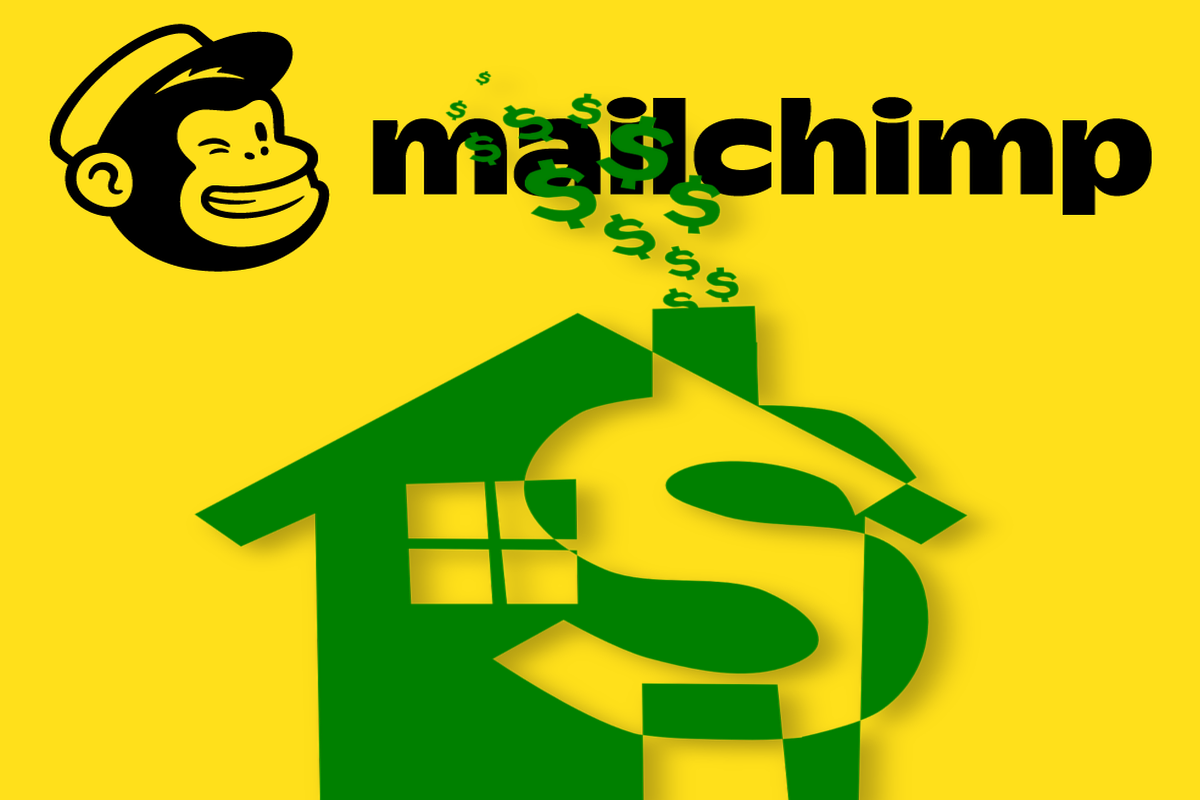Disclosure: This post contains affiliate links. I may receive compensation when you click on links to products in this post. For an explanation of my Advertising Policy, visit this page. Thanks for reading!
Is Mailchimp too expensive? Here’s why Mailchimp may be so expensive.
Mailchimp is great. It’s one of the few email marketing tools that actually lets you start out for free.
However, when you finally realize how effective email marketing can be and that Mailchimp’s free allowance is not enough, you decide to go for one of their paid plans.
That’s when the sticker shock hits you.
You can’t help but think that Mailchimp is just too expensive. Then you ask yourself, “Why is Mailchimp so expensive?”
Well, the reason why Mailchimp may be too expensive is because whenever a company offers a free version of their product, the expense of running that free product has to be made up for somewhere. And that somewhere is usually baked into the prices of all their other plans.
However, there may be more reasons as to why Mailchimp may seem so expensive.
In this post, I’m going to look at some not so obvious changes that Mailchimp had made to its pricing policies, which had caused a bit of a stir a little while back, so you can determine for yourself, whether or not Mailchimp is right for you or just too expensive.
Why Mailchimp’s pricing policies have made it so expensive, even too expensive for many.
As they say, the devil is in the details. Around a year ago Mailchimp had some subtle yet profound changes to their pricing and terms.
This reflects on Mailchimp’s efforts to become more than just a mass email sending service or “email marketing platform”.
As are the current trends in online marketing and online marketing tools, they are trying to pivot more to a CRM (Customer Relationship Management) model.
As a result of this effort, they have made some significant changes. Some of these changes are quite subtle as I had mentioned, yet can add up very quickly in the form of your overall monthly bill at the end of each month or in what Mailchimp counts towards your monthly costs.
Take for example your “amount of contacts”.
-
Number of contacts.
Mailchimp as well as many other email marketing platforms usually calculate your monthly cost based on the number of subscribed contacts.
Although most who use email marketing services, like Mailchimp’s, usually control costs by unsubscribing contacts that have low open rates or for other reasons. Perhaps the wrong or fake email addresses, etc.
However, now Mailchimp actually counts all contacts regardless of their status. This means that you will also pay for all contacts whether they are subscribed or unsubscribed.
As you build your email marketing list it’s normal to cull those who don’t respond and unsubscribe them.
Though you still have these on your Mailchimp account and as such they will count as contacts and you will be billed for them.
In the past, if you had a paid plan with mailchem you could usually send out unlimited emails up to their 50,000 tiered limit.
Now with Mailchimp’s current pricing they have created three new tears. These are: Essential, Standard and Premium.
However, even Mailchimp’s Premium plan no longer offers unlimited emails.
In fact, none of Mailchimp’s current plans offer unlimited emails.
Their lowest tiered plan, called Essential, only offers up to 10 emails a month per contact.
This means that you can send out a maximum of 500,000 emails for a 50,000 contact plan.
These plans of course go up in the amount of contacts, as well as the amount of emails that could be sent per contact per month.
This significantly raised Mailchimp’s pricing to the point where long time users found Mailchimp’s services to be way too expensive.
-
Penalty fees and Overage charges.
I’m not finished. MailChimp has even introduced what are called “Overage Charges” or in other words “Penalty Fees”.
Even under Mailchimp’s old system, you had to be careful not to go over your monthly limit, even on their free plan.
Though, if you did, they would simply automatically upgrade you to the next available plan. The price increases as a result weren’t too bad and even predictable.
However, under the Mailchimp’s pricing today, instead of upgrading you automatically to the next tiered plan, you will be assessed an overage charge or penalty for exceeding your monthly limit.
For example, if you are on Mailchimp’s lowest plan, the Essential plan, if you were to go over your limit, the additional charge is $9.99 per every 500 additional contacts.
This can really add up, especially if you don’t delete your unsubscribed contacts.
It’s just one more pin you have to juggle in order to keep on top of Mailchimp and their insipid pricing increases, rules and limits.
However, if you do notice your email subscribers increasing, you could in theory always upgrade your plan yourself to save from those unexpected overage charges.
Although some may actually like the overage charges and prefer them to upgrading to a higher tiered plan, especially if your email contacts don’t vary too much from month to month.
However, if you do a massive advertising campaign or promotion, you can see how an additional surge in new contacts can really bump up your costs.
-
Tiers and features limitations.
In the past Mailchimp was very open in what their users could access, regardless of plan, even free. Users could take advantage of almost every key feature. There were no limits. Whether they were lists, templates, number of users as well as no limits on emails sent depending on your plan.
Mailchimp completely changed that in their pricing. For example you can no longer invite a colleague on your free plan. No more custom templates on the paid Essential plan.
Even the more expensive Standard plan restricts the number of audiences to 5.
Although many Software as a Service plans have feature restrictions nowadays, the way Mailchimp has gone about it can bring unsuspecting users huge price surges in their monthly bills.
If you’re a small business, looking to grow through a series of promotional campaigns including email, this could break your budget.
Mailchimp’s pricing and terms, closing thoughts.
So there you have it. The main reason why Mailchimp is so expensive. Perhaps too expensive for many email marketers.
Running email marketing campaigns effectively uses quite a bit of server resources. Since Mailchimp still offers a “Free” plan, those server resource costs have to be taken from somewhere.
As a result, when Mailchimp revamped their pricing policies and plans they did so by almost hiding these price raises within their new plans and baked them in with features that used to come included with all plans.
Add to that their “overage charges” and you can see why many complain that Mailchimp is just too expensive for them to stick around.
There are just too many more affordable email marketing services which offer more for less.
So how does Mailchimp manage to attract and keep customers since it is so expensive? By offering their “Free” plan. The old “Freemium” model.
They hope that by the time users are ready to upgrade, they will be so used to Mailchimp’s interface and processes for their email campaigns, that they won’t want to be bothered switching to another email marketing platform.
But now, even if you do sign up for their “Free” plan, you’ll need to keep an even sharper eye on your usage since they’ll now hit you with their “Overage Charges”.


